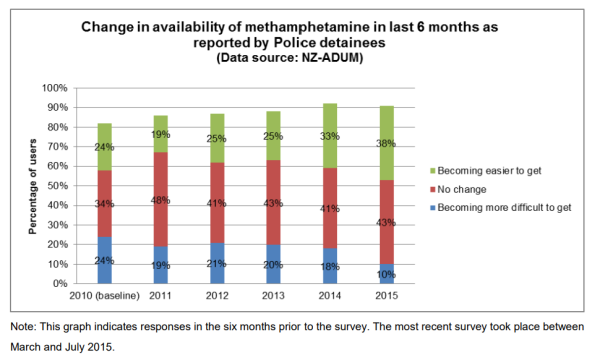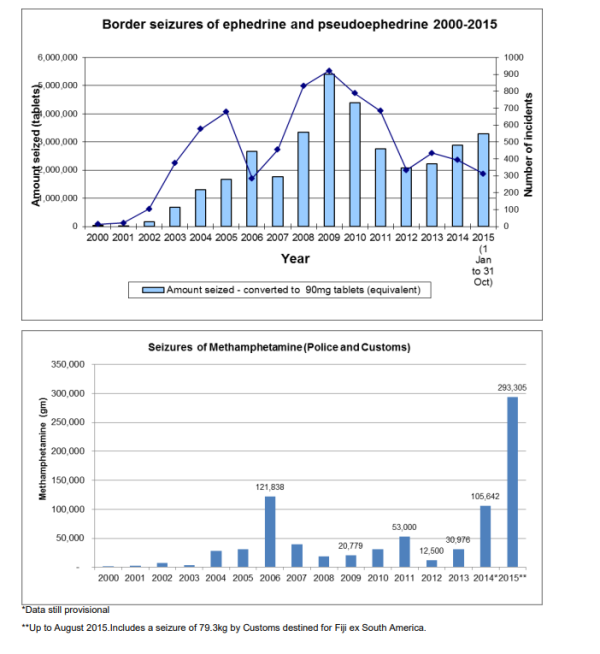The ban on the only cold medicine that seems to work never seemed likely to work.
On Friday, some twelve and a half years after John Key banned it, David Seymour announced that the ACT Party would work to restore over-the-counter access to pseudoephedrine-based cold medicines.
That it has taken twelve long years and two different governments for anyone to call time on this regulatory failure points to deeper problems in New Zealand’s regulatory systems.
Back in 2009, meth production commonly used pseudoephedrine-based cold medicine as an ingredient. So, in April 2010, the Key government introduced legislation to make pseudoephedrine-based cold medicine prescription-only from March 2011. The legislation passed, even though the Pharmacy Guild had warned that other alternatives were not nearly as effective in alleviating cold symptoms.
The government should also have been asking how the methamphetamine market might innovate around restrictions on pharmacy supply of decent cold medicine.
At the time, the government seemed to care about whether the policy would prove effective. The legislation was part of a Tackling Methamphetamine Action Plan which provided progress reports every six months.
Baseline measures were set so the government could track whether the set of policies was working. The average price of methamphetamine was established: $738 per gram, on average, in 2009. So was the drug’s purity, as reported by frequent drug users and as tested in seized samples. Frequent users were also surveyed on drug availability. In 2008, 20% of frequent drug users reported that it was becoming harder to get meth, 43% reported no change, and 28% reported that it was getting easier.
It did not seem plausible that the policy was going to succeed. Supply chains are always more resilient than you might expect, especially when there are large profits to be made.
Work published in the American Economic Review in 2009 helped explain things. There, Carlos Dobkin and Nancy Nicosia traced out the effects of a substantial American drug interdiction effort in 1995. A huge effort to disrupt the supply of meth precursors had succeeded, in the short run. The price of methamphetamine had tripled, and purity declined from 90% to 20%. But the impact was only temporary. Four months later, prices had returned to their original levels. And everything else was back to normal within eighteen months.
Policies like bans on cold medicine only work until suppliers find new ways of meeting user demand.
A somewhat similar pattern showed up in the six-monthly progress reports.
One measure of average prices increased from about $700 in 2008 to just over $800 in 2011. The proportion of users reporting ‘low’ purity increased from 7% at baseline to 14% in 2011.
But by the October 2014 report, prices had returned to where they had been at baseline, or thereabouts. Mean purity was slightly higher than it had been at baseline.
And about two users were reporting that meth was getting easier to find for every user saying it was getting harder.
The policy was obviously failing to do much good. The last six-monthly report was provided in October 2014, with a note that reporting was shifting to an annual basis.
The October 2015 report found the price of meth below where it had been at baseline. About four users were reporting meth was getting easier to find for every user saying it was getting harder to find.
While meth availability had certainly not declined, reported use did decline. At baseline, in 2007/8, 2.2% of Kiwis reported having used meth in the past year. By 2014/15, 0.9% reported such use. But the number of convictions for methamphetamine offenses was higher than it had been at baseline.
And border seizure data showed a sharp shift from seized cold medicines being imported for home-cooked meth, to seized finished methamphetamine.


The supply side policy had failed. The ban on cold medicine worked only until suppliers figured out how to get methamphetamine into the country properly. Meth suppliers had been importing cold tablets, in bulk, before pseudoephedrine was made prescription-only. They continued to import cold tablets after the policy change. But finished methamphetamine was being imported at levels never before seen – or at least was being seized in unprecedented quantities. Rather than abandon the policy, the government abandoned the reports. The October 2015 annual report was the final report in the series.
Things didn’t improve after those reports ended. Other reports continued. By 2017/18, the national median price of methamphetamine had dropped to $500 per gram, with record low prices in Auckland, Waikato, and Wellington. Prices increased with total border closures to control Covid, but normalised soon after. One News reported in June that meth now costs $400/gram.
On average, the price of everything is 38% higher than it was in 2009. But the price of methamphetamine has dropped by more than 40%, despite none of us having reasonable access to cold medicines. If meth were in the CPI, the Reserve Bank’s job would be easier.
The official reports rather clearly establish that the ban on effective access to cold medicine had at most a small temporary effect on the supply of meth. It was obvious, rather quickly, that the ban was not helping. But the ban remained in place.
That is a terrible failure, albeit on a smallish margin. The government had set all of the evaluation frameworks needed for justifying a change in course, should one prove warranted. But it did not see fit to do so when the data came in. It stuck with the bad policy.
Perhaps governments are loath to acknowledge their past failures. But incoming governments should welcome opportunities to wipe out their predecessors’ errors. And especially when changing policy is as easy as writing one line of regulation rescheduling pseudoephedrine and has zero budgetary implications. But the incoming Labour government, in 2017, maintained the ban.
Being able to get decent cold medicine without having friends who can mule it in from overseas may not be the biggest issue in the world. But it points to a larger problem. Bits of regulation that have failed to achieve their purpose and continue to impose cost can remain in place for years after they have been shown to be obviously futile.
After David Seymour’s promise to fix the problem should ACT form part of an incoming government, both National and Labour said they’d be willing to reconsider the policy. But why has it taken so long?
Perhaps we should be looking more closely at another ACT policy: a Ministry for Regulation to run rolling reviews to see what other horrors hide in our country’s regulations.



